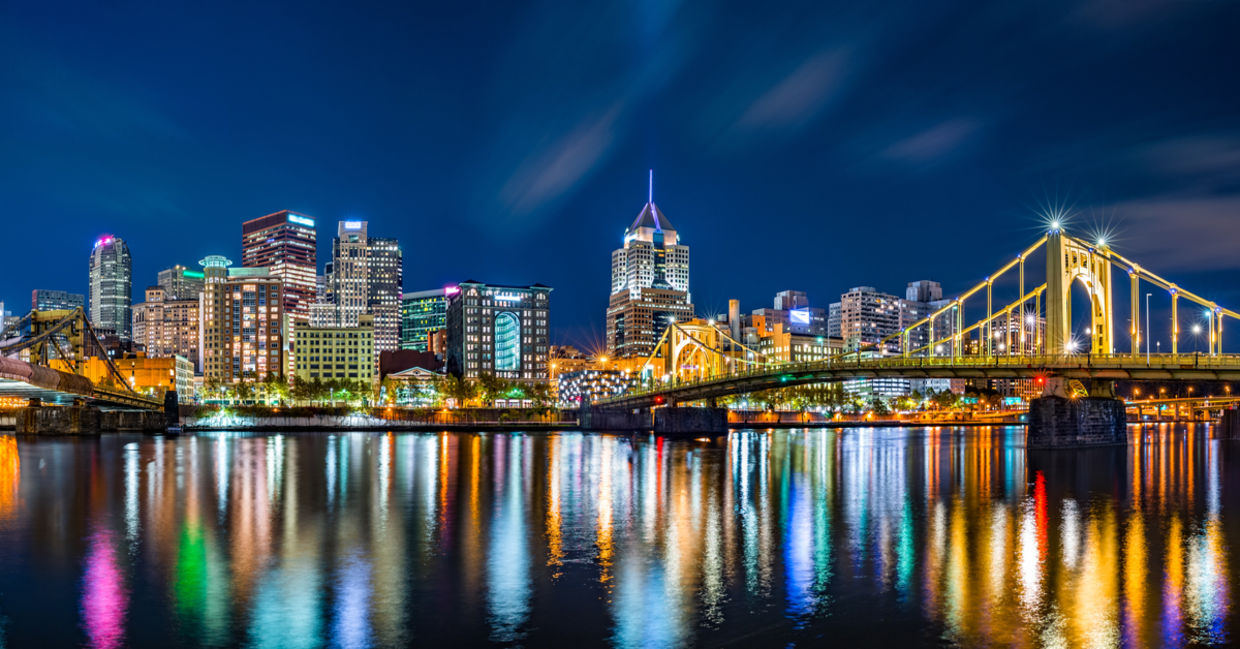
(Mihai_Andritoiu / Shutterstock.com)
City nightscapes can be beautiful but all those lights can also block out nature’s best night show, the stars. Now, Pittsburgh, Pennsylvania is the first city in the Eastern US to go dark sky and that will help put the stars in sight.
Pittsburgh’s city council announced a Dark-Sky Ordinance in August 2021 stating that it would become a dark sky city beginning in 2022 according to Bloomberg. That means that it will use lower wattage LED bulbs and add shades to direct the light downward when lighting roads, bridges, and in public spaces. This will help reduce the light pollution in the city.
“It's a relatively easy fix that all local governments could take on,” Grant Ervin, Pittsburgh’s chief resilience officer and spearhead of the recent dark sky ordinance told Bloomberg. “It’s one of the tools that local governments have an ability to regulate and install as standard.”
Dark Sky’s New Values-Centered Outdoor Lighting
The international Dark Sky Association (IDA) is an organization that works to protect the night skies against light pollution that can harm the environment. According to the organization, the excessive use of artificial life is problematic for people’s sleep patterns and mental health, wildlife, and it also comes with an environmental cost.
Excessive light from cities is called Sky Glow and it effects 80 percent of the world’s population. That’s because conventional lighting frequently just spills up into the sky without focusing on the areas that people want illuminated like roads and walkways.
That’s why IDA came up with an approach to outdoor lightings that the organization calls Values-Centered. This approach to lighting design and installation helps to meet lighting needs while reducing light pollution. There is a searchable database on the IDA website for lighting products that fit the bill. Pittsburgh is the first city in the world to use IDA’s Values-Centered lighting according to Bloomberg.
Making the Switch
The ordinance which only affects public property, at this time, will replace 40,000 light bulbs to LEDS that will emit less blue light; the type of light that is detrimental to animals, insects and plants. They are starting with the 35,000 old and energy inefficient high pressure sodium streetlights, according to Sky and Telescope, an organization for astronomers. The changeover will take 18 months to two years.
The ordinance also replaces the newer LED streetlights that were installed in the 2010s. “About a decade ago, 4,297 streetlights were replaced with 5,000-kelvin LEDs,” Diane Turnshek a dark sky expert and lecturer at Carnegie Mellon University told Sky and Telescope.
“These bright, blue-white lights turn night into day, and are a leading cause of the world’s growing light pollution, so Pittsburgh will replace them with lower-temperature, amber-colored LEDs.”
These lights are also more affordable to operate so it is a win/win for the city and the people who live there. But Pittsburgh is not the first US dark city. That honor belongs to Flagstaff, Arizona. But as more and more cities experiment with Lights Out periods during bird migrations – something Pittsburgh and Philadelphia participated in – this is an idea that can really take off.
YOU MIGHT ALSO LIKE:
The Island of Niue Becomes the First Dark Sky Country
Germany to Revitalize its Insect Population by Dimming its Night Sky
Glowing Plants Could Be the New Light Bulb







